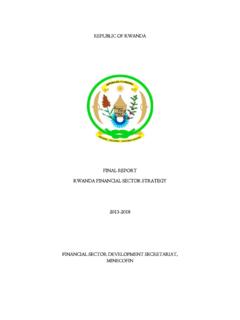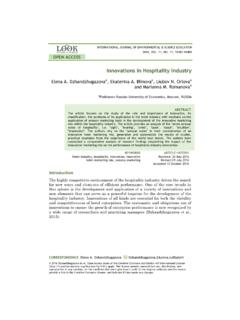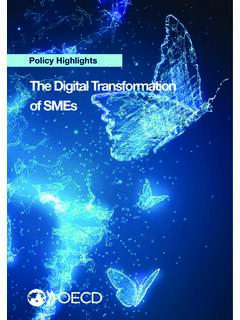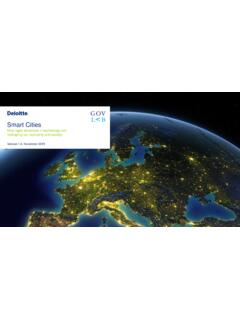Transcription of VISION 2050 - minecofin.gov.rw
1 VISION 2050 |1 Republic of RwandaVISION 2050 Abridged VersionVISION 2050 |2 VISION 2050 Abridged VersionVISION 2050 |3 CONTENTSV ision 2050 4 Background to VISION 2050 51. Introduction 52. Rwanda s changing development context 53. Development of VISION 2050 6 The Rwanda we want: Prosperity and High Quality of Life for all Rwandans 71. Economic Growth and Prosperity 72. High Quality and Standards of Life for Rwandans 7 Pillars of the VISION 2050 91. Human Development 92. Competitiveness and Integration 93. Agriculture for Wealth Creation 104. Urbanization and Agglomeration 115. Accountable and Capable State Institutions 12 Key Considerations for Success 131.
2 Strong and Sustainable macroeconomic fundamentals 132. Positive Values supporting Societal Transformation 143. Rigorous and Effective monitoring and implementation framework 15 Conclusion 16 VISION 2050 Indicators Matrix 17 VISION 2050 |4 We don t want to be a status quo country or status quo people. VISION 2020 was about what we had to do in order to survive and regain our dignity. But VISION 2050 has to be about the future we choose, because we can, and because we deserve will not be satisfed to live paycheck to paycheck, harvest to harvest, without accumulating wealth and fnancial want to live close to the families they love and watch them thrive.
3 They want access to world-class education, right here at home. They aspire to travel the world in search of new ideas and experiences, unhindered by barriers. And then fly proudly back home to Rwanda, because there is no other place they would rather this sounds right, then we are together. That means: Not alone, but all of us. VISION President Paul KagameState of the Nation Address | Umushyikirano, December 2015 VISION 2050 |5 BACKGROUND TO VISION 20501. IntroductionRwanda s VISION 2050 articulates the long-term strategic direction for the Rwanda we want and the enabling pathways to achieve this ambition.
4 Energized by but by no means content with the past two decades of success in reducing poverty, increasing incomes, improving living standards, strengthening good governance, promoting home grown solutions, establishing rule of law, maintaining stability, promoting gender equality and women empowerment, peace and security. Rwanda now aspires to transform its economy and modernize the lives of all Rwandans. Recognizing that achieving these aspirations will require bold and decisive action, VISION 2050 serves as the critical planning and policy blueprint to guide the efforts of all players in Rwanda s development, including Government, private sector, citizens, diaspora, civil society and faith-based organizations, development partners, academia and research institutions, and political Rwanda s changing development contextRwanda has undergone several development phases starting from the aftermath of the Genocide against the Tutsi in 1994 which focused much on recovery.
5 The early 2000s where the VISION 2020 was elaborated, and gave a blueprint for a new Rwanda embarking on economic development aspirations and post-2010 a period that intensified efforts to lay foundations for sustained growth through investing in human capital, developing basic infrastructure and expanding access to various next phase of Rwanda s long term development is focused on transformation of the entire economy and society. There is a need to continue the journey towards self-reliance through a private sector led growth and transformation economic model. VISION 2050 |6In the next 3 decades, the country will make long-term investments in future endowments.
6 Enhanced human capabilities, strong innovation and technological capabilities, socioeconomically integrated forms of urbanization, and effective and accountable institutions of country will play to its inherent strengths, which arise from an endowment of labor including a youthful population, a fertile agricultural landscape, natural resources and a good foundation of Development of VISION 2050 The VISION 2050 was requested by the 13th National Umushyikirano Council in 2015. Subsequently, broad stakeholder consultations and citizens engagement were conducted to define what the Rwanda citizens want to see by stakeholders consulted include: youth and women, private sector, development partners, political parties, civil society, faith-based organizations, academia, and research institutions and persons with disabilities among 2050 establishes the development framework for 2020-2050, with a mid-term review envisaged in 2035 and regular reviews planned every 5 years.
7 The VISION intensifies the country s ambitions and continues the drive towards self-reliance and elaboration of VISION 2050 has taken into consideration the global and regional development agendas, to ensure harmonization of targets and indicators. Those include: The Sustainable Development Goals (SDGs), African Union (AU) Agenda 2063, East African Community (EAC) VISION 2050, and the Paris Agreement on climate change among other instruments. VISION 2050 |7 THE RWANDA WE WANT: PROSPERITY AND HIGH QUALITY OF LIFE FOR ALL RWANDANSThe overarching goals for the VISION 2050 are:1. Economic Growth and ProsperityRwanda aspires to become an upper-middle income country (UMIC) by 2035, and a high-income country (HIC) by , this means realizing the following key economic targets: By 2035: GDP per capita of over USD 4,036; and By 2050: GDP per capita of over USD 12,4762.
8 High Quality and Standards of Life for Rwandans The aim is to achieve high quality and standards of living. Rwanda will build on the strong progress made in reducing poverty over the last two decades, reducing the poverty rate from 78% after 1994 to 38% in 2017, with the aim of eliminating poverty altogether. This will be achieved through ensuring all walks of society have increased opportunities to contribute to national development, including by growing investments in human capital and ensuring universal access to amenities, safety and security. All youth, women, men, and elderly people will contribute as actors of sustainable development, ensuring that no one is left behind in benefting from development.
9 VISION 2050 is informed by the aspiration of Rwandans of leaving to Rwandan children a better world to live in. As such, growth and development will follow a sustainable path in terms of use and management of natural resources while building resilience to cope with climate change 2050 |8 Rwandans aspiration for high quality of life will be further appreciated through the quality of the environment, both natural and built. These aspirations will continue to be embedded in Rwanda s long term Green Growth and Climate Resilient Strategy (GGCRS) whose impact is intended to bring about mindset and developmental transformation in Rwandan society that is necessary to achieve the desired carbon-neutral and climate resilient economy.
10 Efficient use of land across sectors will be guided by the National Land Use and Development Master Plan (2020-2050). VISION 2050 |9 PILLARS OF THE VISION 20501. Human DevelopmentThe overarching objective for this pillar is to reap the economic benefits from the estimated demographic dividend .That is by 2050, the share of the working age population is expected to grow from around 61% of the population in 2017 (NISR) to in economic benefits from this demographic dividend will be realized only through an integrated approach that ensures that decline in fertility is backed up by essential investments in human capital development and economic reforms so that the country has a healthy, well educated, and highly skilled labor force that is gainfully priorities in this pillar include.






